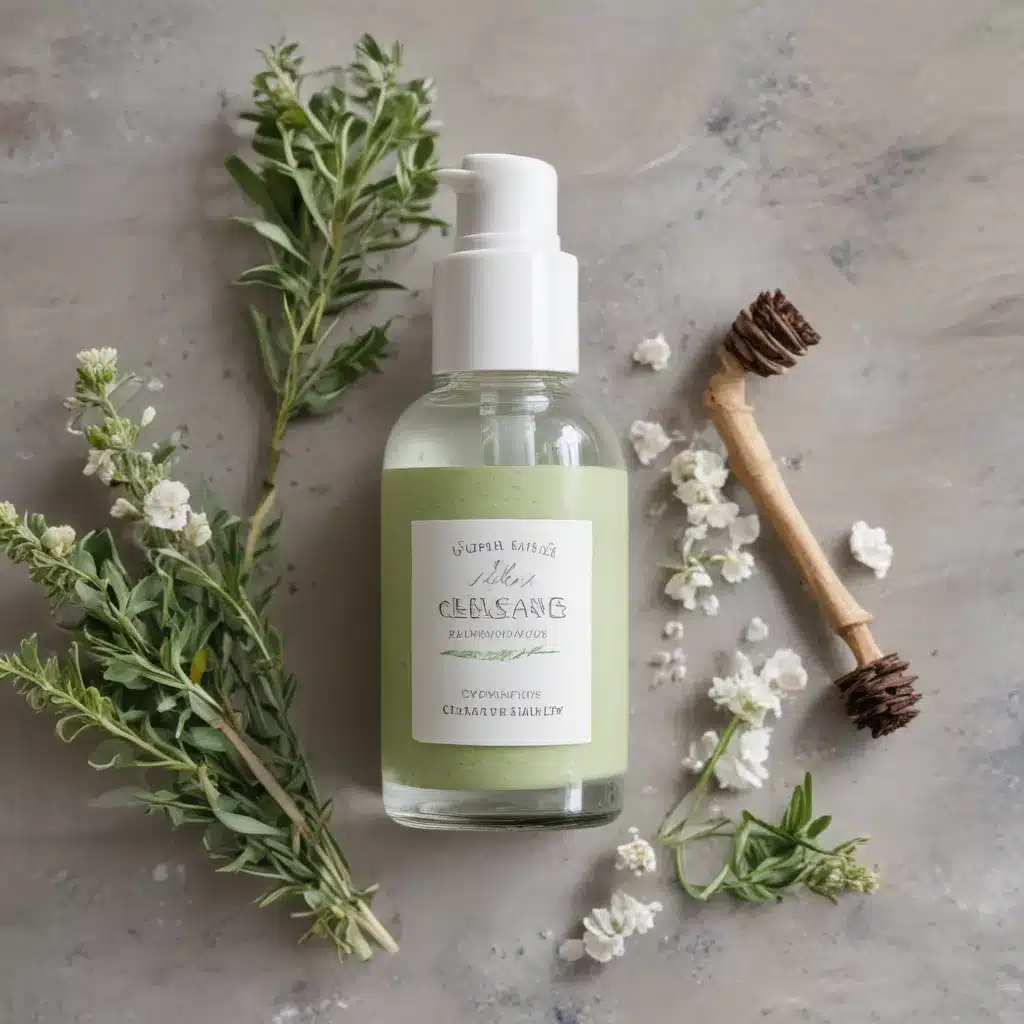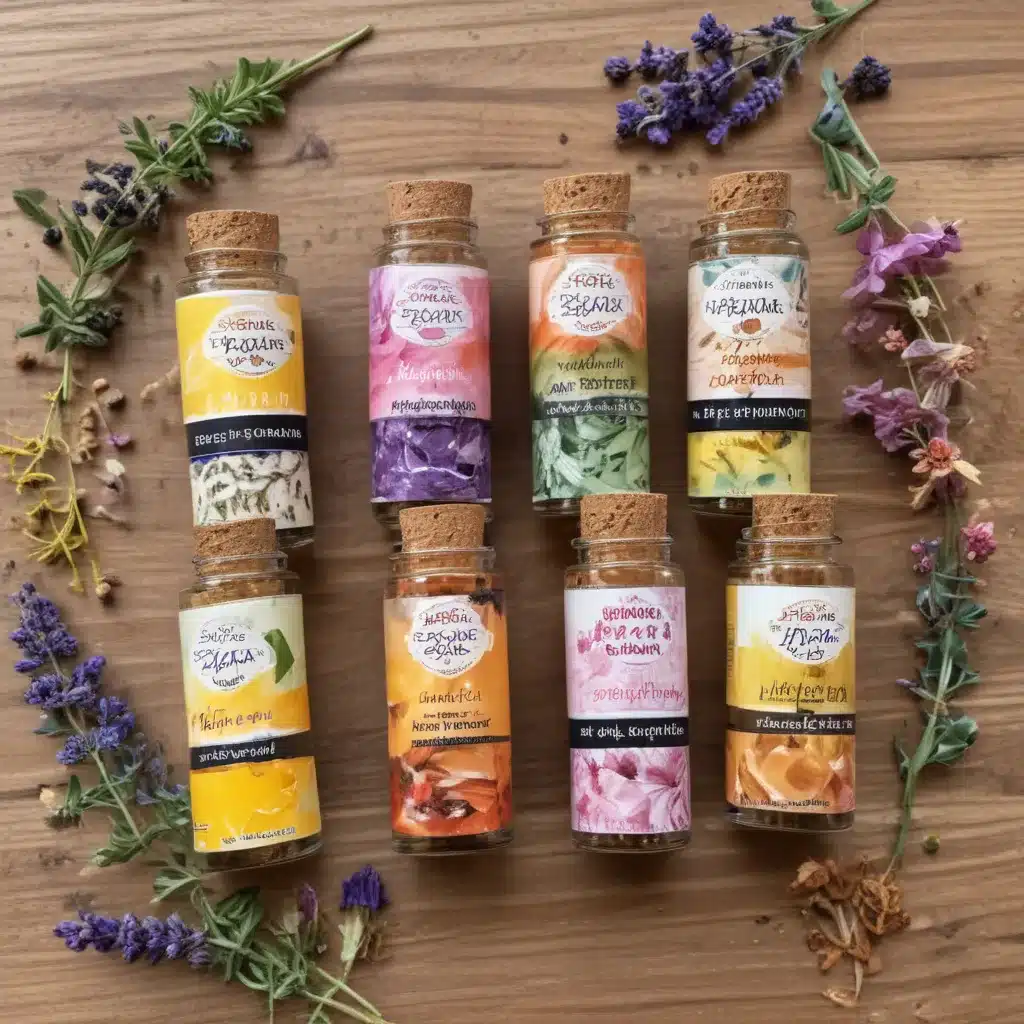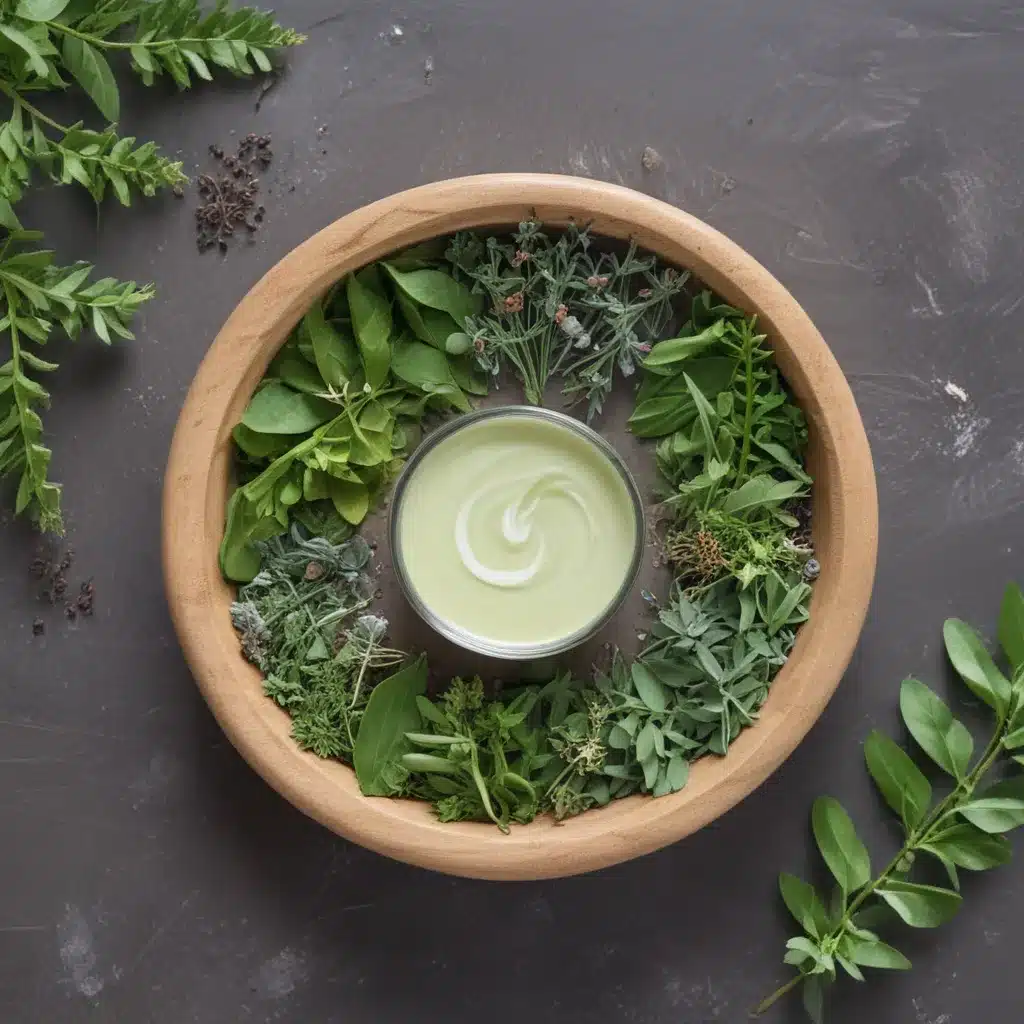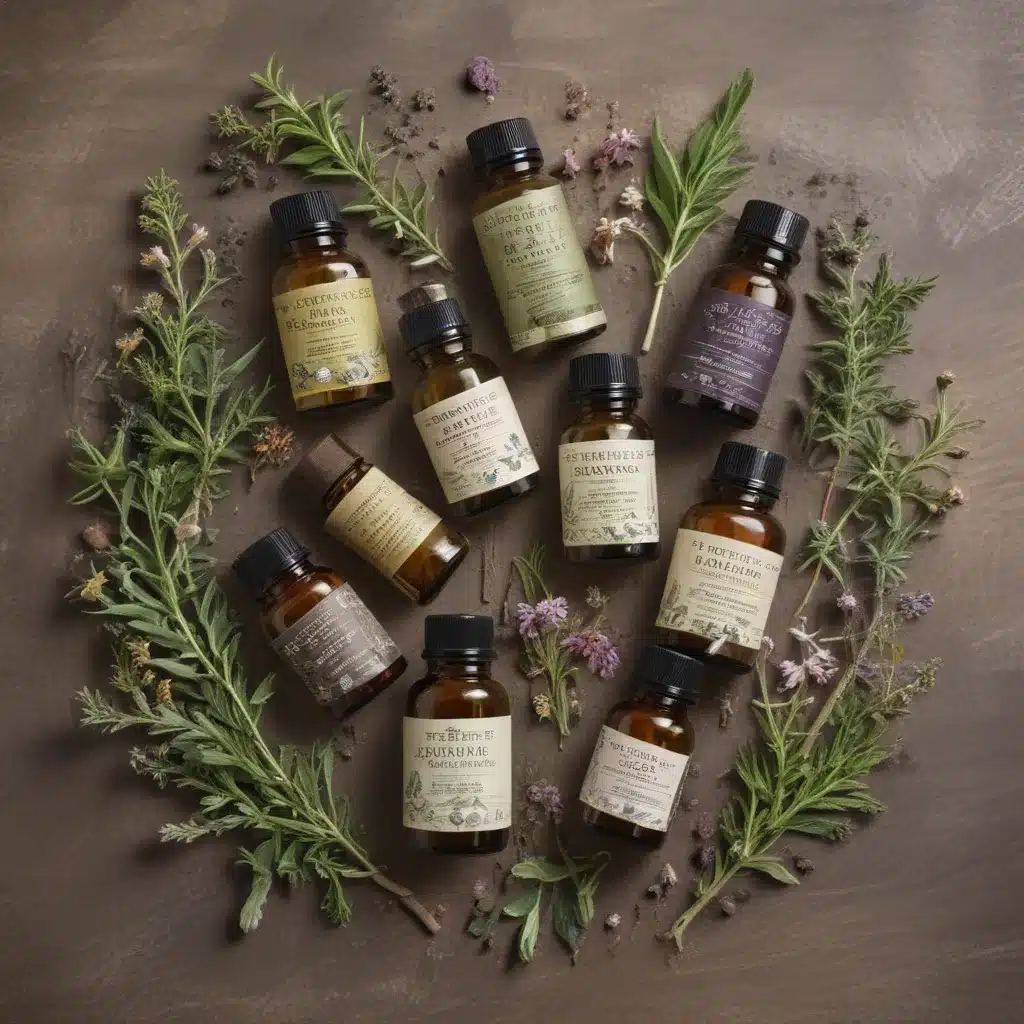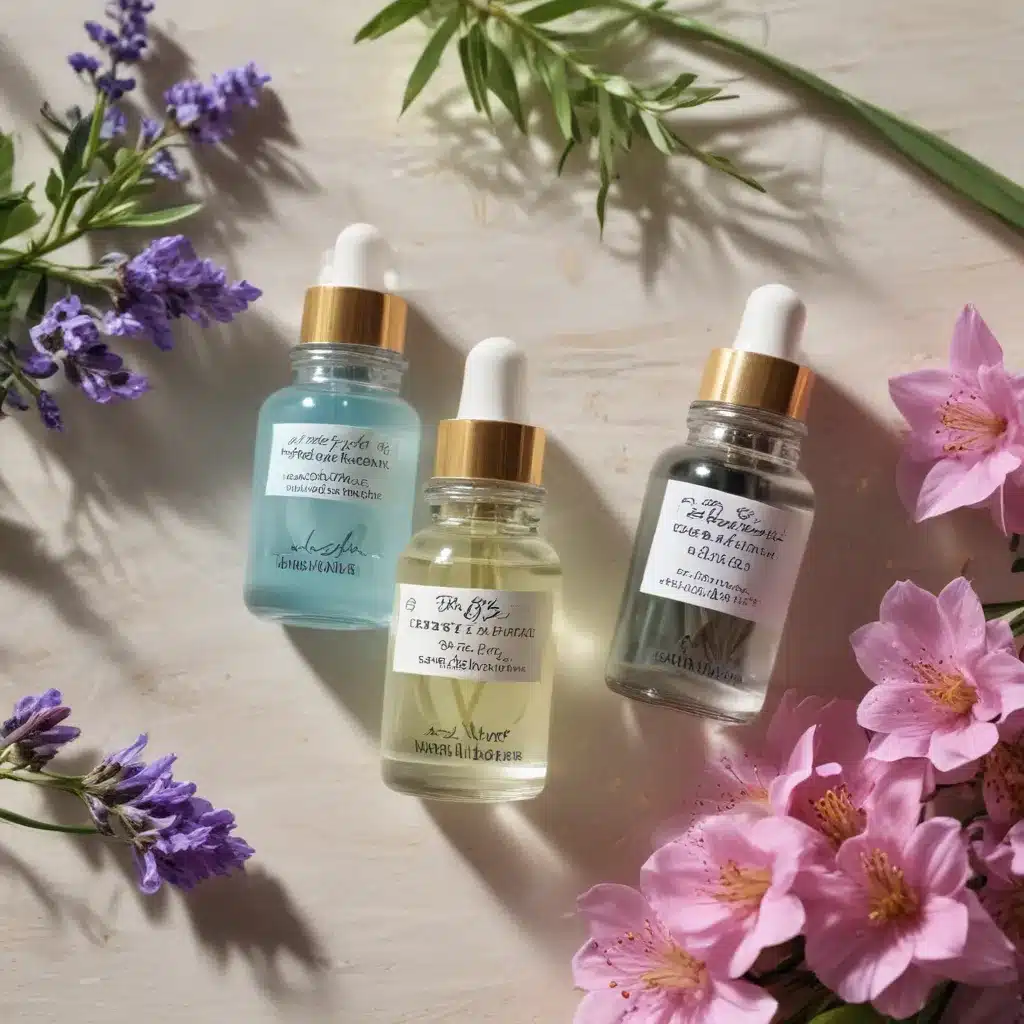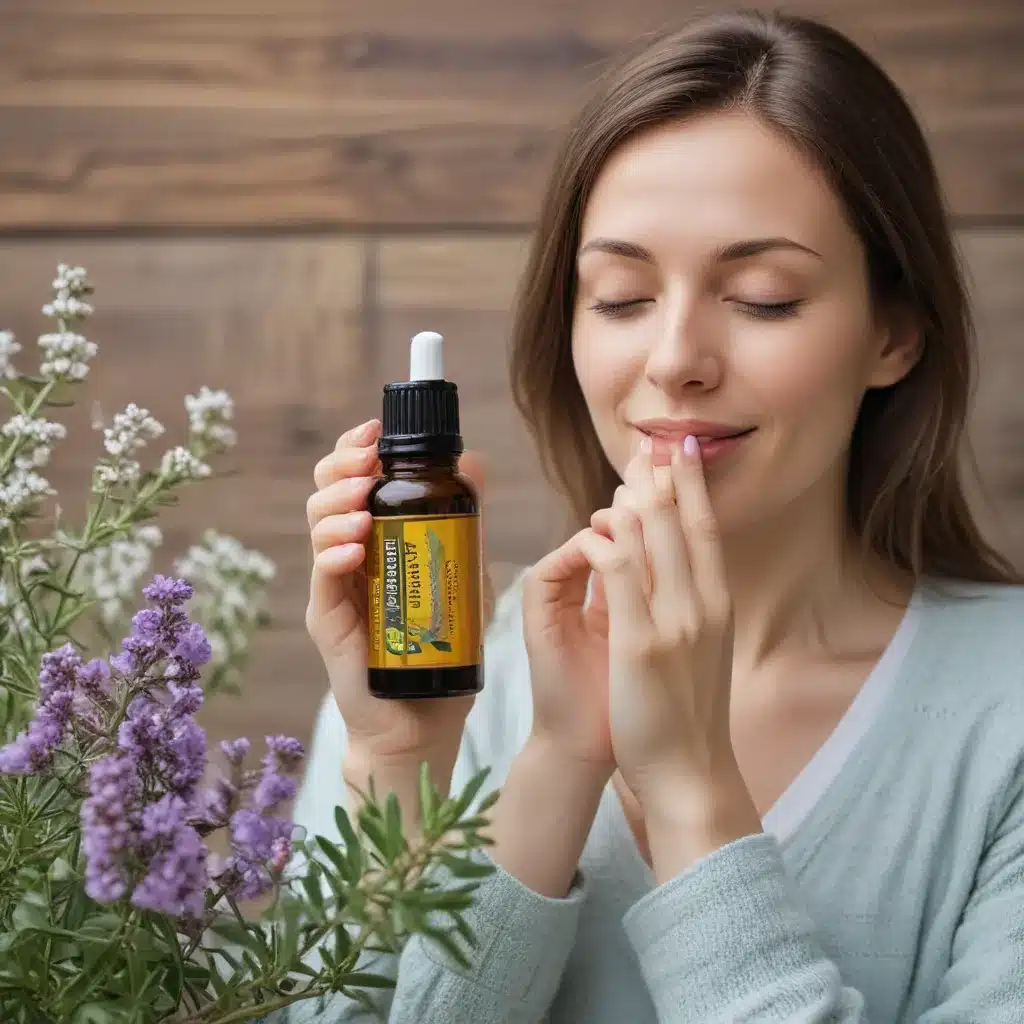
Understanding Seasonal Allergies
Ah, spring – a time of new beginnings, blooming flowers, and…sniffles? If you’re like me, seasonal allergies can really throw a wrench in your plans to enjoy the great outdoors. Itchy eyes, runny noses, and persistent sneezing can make even the most beautiful days feel like a complete buzzkill. But what if I told you that nature’s own medicine cabinet could hold the key to soothing those seasonal symptoms?
Let me take you on a journey through the wonderful world of essential oils and their power to combat allergy woes. As someone who has battled my fair share of allergy attacks, I’ve discovered some real game-changers when it comes to finding natural relief. From pollen-busting powerhouses to sinus-clearing superstars, the right essential oils can be a total lifesaver – and I’m here to share all my secrets.
So if you’re ready to ditch the tissue box and embrace a more holistic approach to allergy management, grab your diffuser and let’s dive in! Together, we’ll explore the best essential oils for seasonal allergies, learn how to use them effectively, and uncover some surprising ways they can support your overall health and wellness. Get ready to breathe easy, my friend – relief is just a few drops away.
The Science Behind Essential Oils and Allergies
But first, let’s talk a bit about the science behind why essential oils can be so effective for seasonal allergies. You see, many of these potent plant extracts possess natural anti-inflammatory and antihistamine properties that can help calm the body’s immune response to allergens.
Take lavender oil, for example – not only is it renowned for its soothing, calming aroma, but its compounds like linalool and linalyl acetate are also known to inhibit the release of histamine. Histamine is the chemical that our bodies produce in excess when we’re exposed to allergens, triggering all those unpleasant allergy symptoms. By blocking histamine, lavender oil can help reduce nasal congestion, itchy eyes, and other allergy-related discomforts.
Similarly, studies have shown that essential oils like peppermint, eucalyptus, and tea tree oil possess potent anti-inflammatory properties that can help calm swollen nasal passages and soothe sinus irritation. And the best part? These natural remedies are generally free of the harmful side effects commonly associated with over-the-counter allergy medications.
So in a nutshell, essential oils work by targeting the root causes of seasonal allergies, rather than just masking the symptoms. They provide a more holistic, long-term solution that can have far-reaching benefits for your overall health and wellbeing. Sounds pretty amazing, right? Let’s dive deeper into the specific oils that can be allergy game-changers.
The Top Essential Oils for Seasonal Allergies
When it comes to combating seasonal allergies, not all essential oils are created equal. Some are true superstars, packed with compounds that can provide rapid relief and ongoing support. Here are some of the top essential oils I recommend for allergy sufferers:
Peppermint Oil
Peppermint oil is a true hero in the fight against seasonal allergies. Its main active compound, menthol, has potent decongestant properties that can help clear stuffy nasal passages and soothe sinus irritation. Studies have also shown peppermint oil to possess antimicrobial and anti-inflammatory effects, making it a powerful ally against allergy-induced inflammation.
I love using peppermint oil in a diffuser to help open up my airways and breathe easier, or mixing it with a carrier oil for a soothing temple or chest massage. You can also try adding a few drops to a warm, steamy shower for an invigorating, allergy-busting experience.
Lemon Oil
Lemon oil is another essential oil superstar for seasonal allergies. Thanks to its high limonene content, lemon oil is a natural antihistamine that can help inhibit the body’s allergic response. It also possesses strong anti-inflammatory properties that can calm irritated nasal passages and soothe itchy, watery eyes.
I find lemon oil to be incredibly refreshing and uplifting, both aromatically and topically. Try diffusing it throughout your home or office to purify the air, or mix a few drops with a carrier oil and apply to your chest, temples, or the bottoms of your feet. You can even add a few drops to your drinking water for an extra immune-boosting boost.
Eucalyptus Oil
If you’re dealing with stubborn sinus congestion, eucalyptus oil should be your new best friend. Its primary compound, cineole, has been shown to thin out mucus and facilitate easier breathing. Eucalyptus oil also exhibits powerful anti-inflammatory effects that can help reduce swelling and irritation in the nasal passages.
I love using eucalyptus oil in a personal steam inhaler or diffuser to directly target those pesky sinus issues. You can also try mixing it with a carrier oil and massaging it onto your chest, back, and the sides of your neck. Just be sure to do a patch test first, as eucalyptus oil can be quite potent.
Frankincense Oil
While it may not be the first essential oil that comes to mind for allergies, frankincense is a true hidden gem. This ancient resin oil possesses powerful anti-inflammatory and immunomodulatory properties that can help regulate the body’s response to allergens. Frankincense has also been shown to have a calming, grounding effect on the mind and emotions – crucial for managing the stress that often accompanies allergy flare-ups.
I like to diffuse frankincense throughout my living space to create a soothing, allergy-easing atmosphere. You can also try applying it topically, either on its own or blended with a carrier oil, to areas like the temples, chest, and back of the neck. Just remember to start with small amounts, as frankincense can be quite potent.
Lavender Oil
Last but certainly not least, lavender oil is a must-have in any allergy-fighting essential oil arsenal. As I mentioned earlier, its calming, anti-inflammatory, and antihistamine properties make it a true powerhouse for combating seasonal sniffles. Lavender oil has also been shown to possess analgesic (pain-relieving) effects, which can be a godsend for allergy-related headaches and sinus pain.
I love diffusing lavender oil throughout my home to create a soothing, relaxing atmosphere, especially before bed. You can also try applying it topically, either on its own or blended with a carrier oil, to the insides of your wrists, the back of your neck, or the bottoms of your feet. The possibilities are endless when it comes to using lavender oil to find allergy relief.
Essential Oil Blends for Seasonal Allergies
While each of these essential oils can be incredibly effective on their own, I’ve found that combining them in strategic blends can take the allergy-fighting power to the next level. Here are a few of my favorite essential oil allergy-relief blends to try:
Decongestant Blend
- 3 drops peppermint oil
- 2 drops eucalyptus oil
- 1 drop rosemary oil
This potent blend of decongestant and anti-inflammatory essential oils can help clear stuffy nasal passages, soothe sinus irritation, and promote easier breathing. Diffuse it throughout your home or office, or apply it topically to your chest, back, and neck.
Antihistamine Blend
- 2 drops lemon oil
- 2 drops frankincense oil
- 1 drop lavender oil
By combining the natural antihistamine and immunomodulatory properties of these oils, this blend can help regulate the body’s allergic response and provide overall allergy relief. Diffuse it, apply it topically, or even add a few drops to your drinking water.
Sinus-Soothing Blend
- 3 drops eucalyptus oil
- 2 drops peppermint oil
- 1 drop rosemary oil
This blend is perfect for targeting stubborn sinus congestion and inflammation. Diffuse it to clear the air, or try adding a few drops to a warm, steamy shower for an invigorating, allergy-busting experience.
The key with these blends is to start with smaller amounts and adjust to your personal preference and sensitivity. Essential oils are highly concentrated, so a little goes a long way. I recommend doing a patch test first to ensure you don’t have any adverse reactions. And as always, be sure to use high-quality, pure essential oils for the best results.
Incorporating Essential Oils into Your Allergy Routine
Now that you know all about the top essential oils for seasonal allergies and some powerful blend recipes, let’s talk about how to actually incorporate them into your daily routine. There are so many wonderful ways to use these natural remedies, and I’m excited to share my favorite methods with you.
Diffusing
Diffusing essential oils is one of the easiest and most effective ways to reap their allergy-fighting benefits. Simply add a few drops of your chosen oil or blend to a high-quality diffuser and let the aromatic compounds permeate the air. This can help clear your nasal passages, soothe inflammation, and create a calming, allergy-easing environment.
I like to keep a diffuser running in my home office and bedroom to ensure I’m breathing in those allergy-busting essential oils all day long. You can also take a diffuser with you to the office or even on the go to enjoy the benefits wherever you are.
Topical Application
Applying essential oils topically can be another highly effective way to find relief from seasonal allergies. When used correctly, these powerful plant extracts can be absorbed through the skin and into the bloodstream, providing targeted support for specific issues.
For allergy symptoms, I love massaging diluted essential oil blends onto my chest, back, and the bottoms of my feet. The skin on the feet is particularly porous, allowing the oils to be quickly absorbed and distributed throughout the body. You can also try applying oils to the temples, behind the ears, and on the back of the neck to help ease headaches, sinus pressure, and nasal congestion.
Internal Use
While essential oils should generally be avoided for internal consumption unless under the guidance of a qualified professional, there are a few safe and effective ways to use them internally for allergy support.
One of my favorite methods is to add a few drops of lemon, peppermint, or ginger oil to my drinking water. This allows me to reap the antihistamine, decongestant, and anti-inflammatory benefits of these oils while also staying hydrated. You can also try placing a drop or two of frankincense oil under your tongue for rapid immune-boosting effects.
Remember, essential oils are highly concentrated, so it’s important to always dilute them properly and start with small amounts. I also recommend consulting with a qualified aromatherapist or other healthcare provider before using essential oils internally, as safety and dosage can vary greatly depending on the individual.
Real-Life Essential Oil Allergy Success Stories
As someone who has personally battled seasonal allergies for years, I can attest to the life-changing power of essential oils. I’ve tried just about every over-the-counter medication and natural remedy under the sun, but nothing has provided the consistent, long-lasting relief that I’ve found with these potent plant extracts.
Take my friend Sarah, for example. She’s had debilitating hay fever for as long as she can remember, with symptoms that would leave her miserable and struggling to function. That is, until she started incorporating essential oils into her daily routine. Sarah discovered that diffusing a blend of peppermint, lemon, and lavender oils throughout her home provided almost immediate relief for her stuffy nose, itchy eyes, and persistent sneezing.
And then there’s my neighbor, Mike, who swears by using a DIY essential oil roll-on on his chest and back during allergy season. He mixes equal parts eucalyptus, frankincense, and carrier oil, and says it’s the only thing that’s been able to calm his inflamed sinuses and soothe his allergy-induced headaches.
These are just a couple of the many real-life success stories I’ve heard from friends, family, and colleagues who have found life-changing relief from seasonal allergies by incorporating essential oils into their daily routines. And I’m confident that with the right oils and application methods, you can experience the same transformative benefits.
Conclusion: Finding Allergy Freedom with Essential Oils
So there you have it – your comprehensive guide to using essential oils to conquer seasonal allergies once and for all. From the science behind their allergy-fighting powers to my personal tips and tricks for incorporating them into your daily life, I hope you feel empowered to ditch the tissues and embrace a more natural, holistic approach to allergy management.
Remember, everyone’s body and allergy experience is different, so it may take a bit of experimentation to find the essential oils and application methods that work best for you. But with a little patience and persistence, I’m confident you’ll unlock the key to allergy freedom and start enjoying the great outdoors again.
So what are you waiting for? Grab your diffuser, stock up on some high-quality essential oils, and get ready to breathe easy this allergy season! Your nose (and the rest of your body) will thank you.
And of course, if you’re looking for the best pure, therapeutic-grade essential oils to support your allergy-fighting journey, be sure to check out AromEssential. Their wide selection of premium oils and expertly crafted blends can provide the natural relief you’ve been searching for. Happy (and snot-free) exploring!


